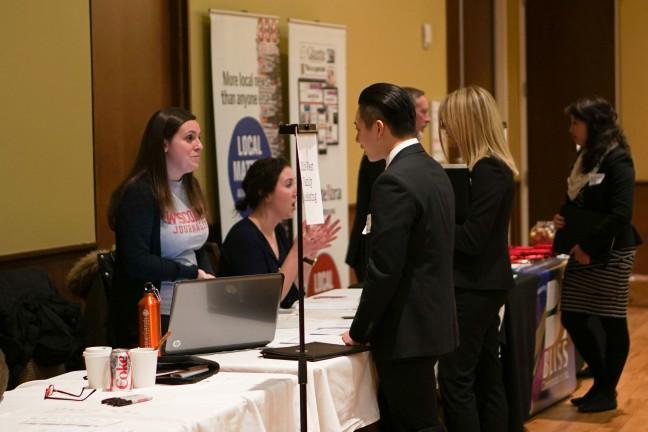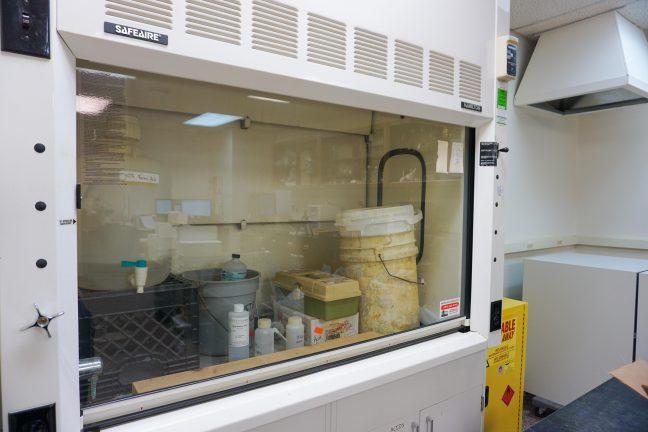There is nothing more pleasing to a Herald or Cardinal employee than the sight of the year’s first paper on the racks.
Then the next day comes. And while the sight of that massive paper inspires pride, the criticism starts almost immediately – both from the student body and the staff themselves.
So while my criticism may be pointed, I don’t intend to stomp on the necks of new staffers who are just trying to get it right. With the first paper of the year, there’s always a great deal of room for improvement. That’s what I hope to show here.
Properly prodding sources
When the Herald Sports Content Editor Nick Korger interviewed Badgers running back Montee Ball for a story on his life in the “fishbowl” of the media spotlight, I expected a few pressing questions to be asked. What actually happened at Mifflin was one of them. How he got through his beating and reflected on the accusations made against him was another. As a public representative of the University of Wisconsin, a greater explanation from Ball on those two incidents was reasonable to ask for.
Instead of hearing Ball give his perspective, Korger highlights the incidents himself, only turning to Ball for a summation of his feelings on the matter. We hear from Ball that it has definitely changed his perspective, but not in a great amount of detail.
Korger said he was going for Ball’s reflection after the fact and said that multiple media outlets had interviewed him before and extracted more detail he didn’t want to rehash.
I can certainly understand that. I also understand that Ball is an expert at managing the media, but a little rehashing from Ball’s point of view might have benefited an audience looking to the Herald for that information. And prodding is especially crucial when dealing with media-conscious figures like Ball. I don’t fault Korger for his angle, but he could have at least mentioned lingering questions from the incidents to balance out the background.
I initially felt the same way about the Herald’s top page news story on Mifflin.
The news that Soglin now intends to bring the annual booze bash to a grinding halt this year is not unexpected, but his seriousness in executing it is certainly newsworthy. However, the story does little to spell out how Soglin plans to accomplish that. Editor-in-chief Ryan Rainey says the Herald did ask specifics of Soglin and sought out an answer from multiple sources, some of which never called back.
Alderman Mike Verveer’s comment on possibly relocating the event also provides some background. Yet the story should have been more explicit about what was and wasn’t known. If Soglin refused to say how he’d stop it or didn’t have a plan, that should be stated explicitly for the record, along with background on his previous opposition. Rainey acknowledges the need for a follow-up and I hope to see it.
A statistical overload
State Legislative Editor Polo Rocha had his work cut out for him with his story on the conflicting job claims. Having covered the issue, I can say that trying to put the numbers in clear, clean language is nearly impossible. However, Rocha does a good job in the main story of trying to lay out the differences between the two data sets. He also paired a claim of overall job losses since Dec. 2010 by Assembly Minority Leader Peter Barca’s office with state official’s explanation of the lack of seasonal adjustment that actually makes sense.
What didn’t work as well was the graphic. While the numbers are right for the most part, it’s confusing and misleading in two instances. The 11,300 jobs lost on the bottom of the graph? They’re tied to the CES numbers from March of 2011 to March of 2012, not the QCEW figures. Additionally, the Wisconsin unemployment rate is not part of the Current Employment Statistics monthly survey; that number is calculated through the Current Population Survey, a different survey done by the Bureau of Census in the Bureau of Labor Statistics.
Confused? Here’s what you need to know – CES and CPS are surveys and approximate. QCEW is an actual job count of about 96 percent of state businesses (excluding sole proprietors and railroad employees). That’s why some state officials think it’s more accurate.
Considering that readers are more likely to zoom to that graphic than Rocha’s main story, it’s crucial that those facts be perfect. It’s certainly difficult to do given the statistical soup, but if you aren’t sure about it, don’t print it.
Cleanliness is next to godliness
A kudos is much deserved for the Herald web staff for retooling the Herald website. It’s not a major overhaul – the main structure and grid format is preserved – but the white background and cleaner fonts make the site far easier to navigate. Rainey says they also plan to overhaul article pages and the individual section pages, which are definitely in need of some revamp. For now, this is a good start. I’ll be happy to see section pages with archives that are clearly presented and easier to search.
A few other notes:
-Joe Timmerman’s column advocating fact checks needed some itself. The federal stimulus bill was $787 billion, not $631 billion and WWII cost $4.1 trillion in today’s dollars, something that should have been clarified. Especially in a column advocating fact checks, that’s an inexcusable oversight.
-A sports editor in news? Elliot Hughes, former Herald Sports Editor, is now Deputy News Editor. The former deputy resigned over the summer, giving way to Hughes. Hughes says he’s still trying to train his news instincts, but given his sound judgment in sports, it’s a good choice to fill the no. 3 spot. Much luck to him.
Jason Smathers ([email protected]) is a reporter covering the Wisconsin State Capitol for WisPolitics.com. He was the editor-in-chief for The Badger Herald from 2009-2010.







